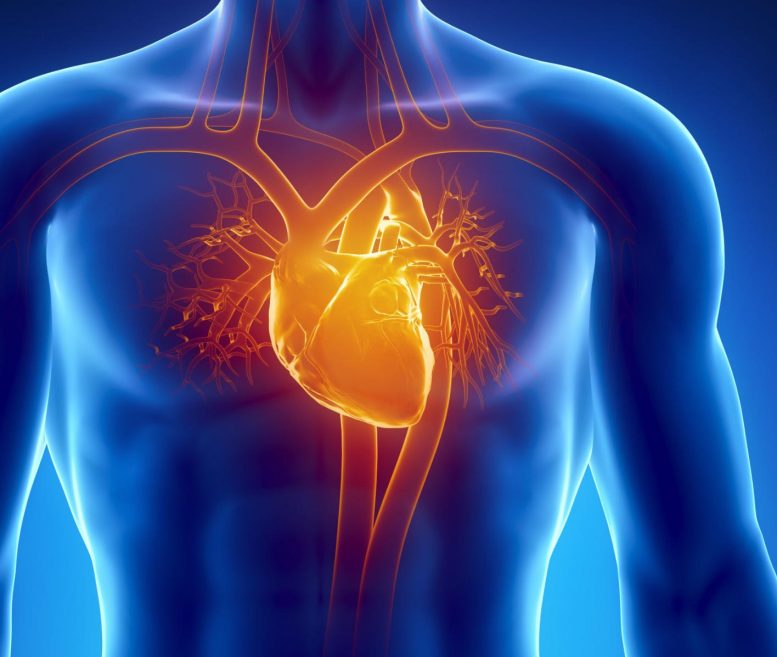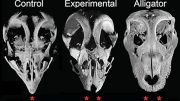
Over a quarter of individuals over 60 have undetected heart valve disease, according to a comprehensive study. Age-related factors play a critical role in the prevalence and severity of the disease, highlighting the necessity for ongoing research and improved healthcare screenings.
A study identified undiagnosed heart valve disease in 28% of people over 60, emphasizing the importance of better screening in managing health in older adults.
- Almost 4,500 healthy and symptom-free over-60s were examined, with 28% found to have heart valve disease
- Age was found to be strongly associated with an increased incidence of significant heart valve disease
- Study lays the foundation for more research into the potential role of screening in the elderly population
The sheer scale of undiagnosed heart valve disease in our aging population has been revealed for the first time, thanks to new research led by the University of East Anglia (UEA).
More than a quarter of healthy and symptom-free over 60s examined in the study were found to have previously undetected heart valve disease.
Co-lead author Vassilios Vassiliou, Clinical Professor of Cardiac Medicine at UEA’s Norwich Medical School, said: “This study focused on understanding how widespread heart valve issues of any severity are among healthy, symptom-free adults without any known heart diseases.
Key Findings on Heart Valve Disease Prevalence
“We examined almost 4,500 individuals aged 60 and older from three regions in the UK: Norfolk, West Midlands, and Aberdeen, using echocardiography, which is an ultrasound of the heart.
“Our findings showed that more than 28% of these adults had some form of heart valve disease, although reassuringly it was only mild in the majority of the cases.
“The data also indicated that age was the main factor associated with these heart valve problems, meaning that the older a person is, the higher their chance of having a significant valve issue.”
Understanding Heart Valve Functions and Problems
Blood flows around the heart and the rest of the body in one direction, like a one-way traffic system.
The four heart valves (pulmonary and tricuspid on the right side, and aortic and mitral on the left side of the heart) control the direction of the blood flow ensuring optimal pumping of the heart.
Co-lead author Prof Michael Frenneaux, of the Royal Brompton Hospital, part of Guy’s and St Thomas’ NHS Foundation Trust and Imperial College London, said: “Heart valve disease is when one or more of the heart valves do not work as they should.
“The main problems are caused by the valve not opening fully (valve stenosis) which restricts the flow of blood, or the valve not closing properly (valve regurgitation) which means blood can leak back in the wrong direction.
“These problems can put extra strain on the heart and make the heart work harder. Over time, it can increase the risk of having a heart attack, stroke, and other heart conditions.”
Challenges in Diagnosing Heart Valve Disease
Symptoms can include feeling breathless, chest pain, feeling weak or dizzy, swollen ankles and feet, feeling more tired than usual, and chest or neck palpitations.
Between 2007 and 2016, a total of 10,000 asymptomatic patients, over the age of 60, were invited through their general practices to take part in the study, which was funded by the British Heart Foundation.
Of those, 5,429 volunteered to participate, of whom 4,237 were eligible for inclusion.
They were evaluated with a health questionnaire, clinical examination, and transthoracic echocardiography, which is an ultrasound of the heart.
Heart valve disease was diagnosed in 28.2pc. The prevalence of clinically significant valvular heart disease was reassuringly only 2.4pc, with one in 42 of the over-60s found to have a moderate or severe case, rising to one in 15 for those aged 75 and older.
However, only 21pc — 900 of the 4,237 patients evaluated — were 75 or over and only 8.6pc were over the age of 80.
Prof Vassiliou said: “The diagnosis of heart valve disease mostly relies on transthoracic echocardiography, however, this is normally only carried out if symptoms are reported or if an unusual murmur is heard during a physical examination.
“This can be challenging in the elderly because mild symptoms may be masked by reduced physical activity and impaired mobility.”
Potential for Improved Screening and Care
“This study reveals that many older adults have heart valve issues, even if they don’t show any symptoms and we would suggest that if people do develop any new symptoms or signs that could indicate heart disease to discuss this with their doctor,” Prof Vassiliou continues.
“As our population ages, this information can help healthcare providers understand the scale of valve disease and streamline routine care methods and screening programs to ensure that we can cope with the demand in the future.
“This way, they can better identify and help those at risk before problems become serious.”
The researchers say further studies are needed to clarify the prevalence of the disease in the elderly population and how screening could be used to help identify and manage the disease.
James Leiper, Associate Medical Director at the British Heart Foundation, said: “This important research using a very large group of people without symptoms showed that over a quarter of participants had a previously undetected heart valve condition.
“Further research will be required to build on these strong foundations and develop methods to test the feasibility of disease identification in these individuals.
“Whilst we have made strides, there is still more to be done to eradicate heart disease for good. It is essential that we keep funding lifesaving research, so fewer people have to go through heartbreak.”
Reference: “Prevalence of asymptomatic valvular heart disease in the elderly population: a community-based echocardiographic study” by Vasiliki Tsampasian, Cristian Militaru, Sathish Kumar Parasuraman, Brodie L Loudon, Crystal Lowery, Amelia Rudd, Janaki Srinivasan, Satnam Singh, Girish Dwivedi, Gnanadevan Mahadavan, Dana Dawson, Allan Clark, Vassilios S Vassiliou and Michael P Frenneaux, 26 June 2024, European Heart Journal – Cardiovascular Imaging.
DOI: 10.1093/ehjci/jeae127
The research also involved the Norfolk and Norwich University Hospital, Aberdeen Royal Infirmary, University of Aberdeen, University of Birmingham, the Royal Brompton Hospital, London, and Imperial College London.









New flash from the world of science: Stuff wears out as you get older!
Whoda thunk it?